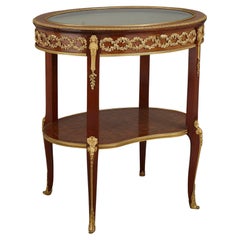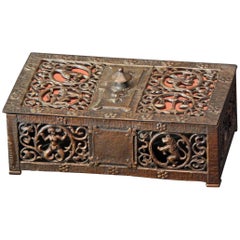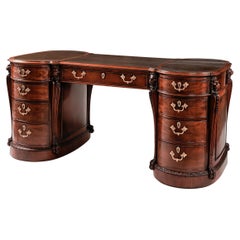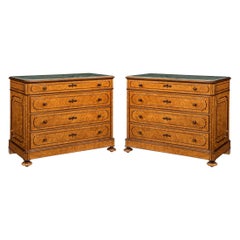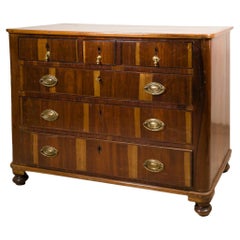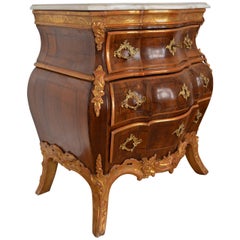Makers Of Antique Furniture
1830s English William IV Makers Of Antique Furniture
Birdseye Maple
1920s English Makers Of Antique Furniture
Paper
1890s French Belle Époque Makers Of Antique Furniture
Ormolu
1920s American Art Deco Makers Of Antique Furniture
Bronze
19th Century English Georgian Makers Of Antique Furniture
Brass
Early 1900s French Victorian Makers Of Antique Furniture
Brass
1880s English Makers Of Antique Furniture
Birdseye Maple
19th Century Portuguese Baroque Makers Of Antique Furniture
Metal
Mid-18th Century Danish Rococo Makers Of Antique Furniture
Marble
Early 20th Century British Country Makers Of Antique Furniture
Brass
Early 18th Century English George I Makers Of Antique Furniture
Walnut
1920s American International Style Makers Of Antique Furniture
Sterling Silver
19th Century English Victorian Makers Of Antique Furniture
Sterling Silver
Mid-19th Century British Campaign Makers Of Antique Furniture
Brass
1890s Victorian Makers Of Antique Furniture
Oak
18th Century English Regency Makers Of Antique Furniture
Mahogany
19th Century English Victorian Makers Of Antique Furniture
Oak
18th Century French Louis XVI Makers Of Antique Furniture
Marble, Brass
Mid-19th Century Makers Of Antique Furniture
Paper
Early 1900s German Rococo Makers Of Antique Furniture
Porcelain
18th Century English Chippendale Makers Of Antique Furniture
Mahogany, Oak
1770s Italian Rococo Makers Of Antique Furniture
Brass
1920s Italian Art Deco Makers Of Antique Furniture
Mirror, Walnut, Burl
Early 20th Century French Louis XV Makers Of Antique Furniture
Marble, Ormolu
Late 19th Century French Belle Époque Makers Of Antique Furniture
Marble, Bronze, Ormolu
Late 19th Century English Campaign Makers Of Antique Furniture
Brass
Late 19th Century French Belle Époque Makers Of Antique Furniture
Marble, Bronze, Ormolu
Late 19th Century French Belle Époque Makers Of Antique Furniture
Marble, Bronze, Ormolu
19th Century American American Classical Makers Of Antique Furniture
Cherry, Poplar, Pine
Early 1900s English Sheraton Makers Of Antique Furniture
Marble
19th Century French Louis XV Makers Of Antique Furniture
Bronze
19th Century French Louis XVI Makers Of Antique Furniture
Ormolu
19th Century French Louis XVI Makers Of Antique Furniture
Marble, Ormolu
19th Century French Louis XVI Makers Of Antique Furniture
Breccia Marble, Ormolu, Bronze
Early 19th Century English Makers Of Antique Furniture
Paint
Early 20th Century American Art Deco Makers Of Antique Furniture
Paper
18th Century Makers Of Antique Furniture
Paper
Early 20th Century English Mid-Century Modern Makers Of Antique Furniture
Sheet Metal
19th Century Chinese Qing Makers Of Antique Furniture
Porcelain
19th Century French Makers Of Antique Furniture
Sterling Silver
1890s French Art Nouveau Makers Of Antique Furniture
Bronze
1870s English Makers Of Antique Furniture
19th Century Makers Of Antique Furniture
Paper
18th Century English George III Makers Of Antique Furniture
18th Century British George III Makers Of Antique Furniture
1870s English Folk Art Makers Of Antique Furniture
Wool
1880s German Jugendstil Makers Of Antique Furniture
Silver, Metal, Silver Plate
1660s European Charles II Makers Of Antique Furniture
Sterling Silver
18th Century and Earlier British Makers Of Antique Furniture
19th Century English Victorian Makers Of Antique Furniture
Velvet, Glass, Mirror, Boxwood, Ebony, Fruitwood, Walnut, Burl, Amboyna
Early 19th Century English Regency Makers Of Antique Furniture
Hardwood, Elm
Early 19th Century English Regency Makers Of Antique Furniture
Marble
19th Century English Regency Makers Of Antique Furniture
Mahogany
19th Century English Regency Makers Of Antique Furniture
Crystal, Brass
Mid-19th Century English Victorian Makers Of Antique Furniture
Brass, Ormolu
19th Century British Regency Makers Of Antique Furniture
Brass
19th Century English Other Makers Of Antique Furniture
Mahogany
Early 19th Century Swedish Gustavian Makers Of Antique Furniture
Wood
19th Century English George IV Makers Of Antique Furniture
Mahogany
Early 19th Century English Regency Makers Of Antique Furniture
Rosewood
- 1
- ...
Makers Of Antique Furniture For Sale on 1stDibs
How Much is a Makers Of Antique Furniture?
- 1stDibs ExpertJanuary 25, 2019
A maker’s mark is a markstamped, impressed or painted on an antique and helps identify it as authentic. Maker’s marks on antiques are similar to trademarks on newer pieces.
- 1stDibs ExpertApril 12, 2024A furniture maker is sometimes called a carpenter or furniture designer. More generally, you can refer to someone who makes furniture by hand as a craftsperson or artisan. The term furniture maker can also apply to a company that manufactures furniture. Find a large collection of antique, vintage and contemporary furniture on 1stDibs.
- 1stDibs ExpertApril 22, 2024A few things characterized the work of Émile-Jacques Ruhlmann. By the end of his career, he was best known for being a skilled ensemblier, a term for a designer who not only makes furniture and decorates spaces but personally crafts each and every piece required in the space, from doorknobs to sofas. This practice ensured that the space was harmonious and consistent with Ruhlmann’s vision, and it contributed to the lasting popularity of his designs. While the Arts and Crafts and Art Nouveau movements were early influences, he is renowned for the modernity of his Art Deco designs, which reflected the opulent nature of the era, involving luxurious materials like Macassar ebony, amboyna burl, ivory and precious metals and skilled craftsmanship and construction techniques. Explore a variety of Émile-Jacques Ruhlmann furniture on 1stDibs.
- 1stDibs ExpertMay 30, 2024To identify your antique furniture, look for an engraving, tag, label or other marking that indicates who produced it. You may find it on the bottom or back of your furniture or inside a drawer or cabinet. Once you have located the marking, you can snap a photo of it and use a reverse image search to try and identify the maker. Or, you can type a description of the mark into a search engine. Alternatively, you can use the services of a certified appraiser or antiques dealer to get assistance with identification. On 1stDibs, shop a large selection of antique furniture.
- What makes furniture an antique?1 Answer1stDibs ExpertAugust 15, 2019
A piece of furniture is considered an antique if it is at least 100 years old.
- Is antique furniture in style?1 Answer1stDibs ExpertApril 22, 2024Yes, antique furniture is in style. Many people appreciate the beauty and handcrafted character of antique furniture and love the idea of owning pieces with a rich history. Remember that style preferences are nothing if not fluid, meaning what's in one year may not be the next. So, in choosing the furniture you're planning to live with, you should pay less attention to interior design fads than to what speaks to you. That way, you can select pieces that will add long-term character to your home. On 1stDibs, find a large collection of antique furniture.
- 1stDibs ExpertApril 5, 2024To know if your furniture is antique, look for labels and markings that indicate the maker. From there, you can use trusted online resources to determine when they were active and examine images to try to estimate the age of your piece. Furniture produced 100 years ago or more is antique. You can also have your furniture assessed by an appraiser or antiques dealer to learn about its age. On 1stDibs, explore a large collection of antique furniture.
- 1stDibs ExpertMay 14, 2024Many antique furniture brands are popular. While trends in collecting do vary over time, some makers consistently remain highly sought after. Among them are J. & J.W. Meeks, John Henry Belter, R. J. Horner and Co., Stickley Furniture, George Hepplewhite, Josef Dannhauser, Thomas Chippendale and Thomas Sheridan. On 1stDibs, shop a variety of antique furniture.
- 1stDibs ExpertFebruary 22, 2021There are a number of factors that can indicate if your antique furniture is valuable. When determining the value of antique furniture, consider its rarity. Additionally, it is important to determine the quality and condition of vintage furniture. If unsure of the value of your vintage furniture, have it appraised.
- 1stDibs ExpertFebruary 22, 2021Antique furniture can be worth quite a lot, particularly if it is in good quality. The rarer the piece, the higher the value.
- 1stDibs ExpertFebruary 13, 2024Whether antique furniture is making a comeback is a matter of opinion. Many people would argue that antique furniture never faded from fashion, as there have always been individuals who love the idea of owning pieces that have history. Some of the most popular styles for antique furniture include Art Deco, Arts and Crafts, Renaissance Revival, Elizabethan, Gothic Revival, Victorian and Chippendale. Find a large collection of antique furniture from some of the world's top dealers on 1stDibs.
- 1stDibs ExpertFebruary 1, 2024To date antique furniture from the UK, first look for identifying markings on the piece. You can then use trusted online resources to determine when the maker was active. From there, you may be able to estimate the year of production by looking at images of other furniture the maker produced. An expert appraiser or antiques dealer can also aid you in the dating process. Find a large selection of antique furniture on 1stDibs.
- 1stDibs ExpertNovember 4, 2024To identify antique Chinese furniture, look carefully at its details. Chinese craftsmen often built furniture using mortise and tenon joinery, eliminating the need for nails and screws. If you see this type of hardware, your piece is likely not at least 100 years old, especially if the hardware still looks new and shiny. Since antique furniture was handmade, you will normally see slight imperfections, such as tool marks or slight variations in carvings. Pieces that appear completely uniform and pristine are less often genuine antiques.
When present, maker's marks can also be helpful. Research the marks to learn more about when the maker was active and producing pieces like yours. Alternatively, you can have a certified appraiser or experienced antique dealer evaluate your furniture for you.
Shop an assortment of antique Chinese furniture. - 1stDibs ExpertNovember 13, 2024How old furniture that is called antique can be is typically at least 100 years. People usually call furniture between 20 and 99 years old vintage. Contemporary is the word for furniture manufactured within the last 20 years. On 1stDibs, shop a large selection of antique, vintage and contemporary furniture from some of the world's top sellers.
 PAGODA REDOctober 7, 2020
PAGODA REDOctober 7, 2020To determine the age of a Chinese furniture piece, look carefully at the joinery and finish. Natural expansion and contraction of the wood over time will cause a joint to protrude or retract, distorting a once-seamless fit. Antique lacquer finishes become crackled and worn over time. Areas of exposed wood, such as the underside of a table, the footrest of a chair, or the back of a cabinet should appear raw and dry compared to the finished surface. With use, the legs of tables and chairs become weathered near the bottom from precipitation and use.
- 1stDibs ExpertAugust 29, 2024To tell how old your antique furniture is, research the maker using trusted online resources. You may find that the furniture maker was active for only a short period, giving you the ability to roughly estimate its age. For manufacturers and designers with a long history of production, consider the style of your furniture and look for images of similar pieces published online. Because it may be difficult to date furniture on your own, consider consulting a certified appraiser or knowledgeable antique dealer. On 1stDibs, explore a variety of antique furniture.
- 1stDibs ExpertAugust 20, 2024To tell what your antique furniture is worth, look at sales histories on trusted online platforms and read valuation guides posted on trusted online resources. The maker, type, style, age and condition of your furniture will impact its value. Researching furniture produced by the same maker is a good starting point. A certified appraiser or knowledgeable antique dealer can also aid you in the valuation process. Find a large collection of antique furniture on 1stDibs.
- 1stDibs ExpertOctober 5, 2021The best finish for antique furniture is a matter of liking. But film finish is recommended by experts as it leaves a thick coat of film on the wood surface which protects wood from water and scratches. Shellac or varnish and water base are commonly used film finishes. Find an exquisite collection of antique, new and vintage furniture on 1stDibs
- 1stDibs ExpertOctober 24, 2024To tell who made your antique furniture, seek out a maker's marking. Locations of these marks vary, but they are generally in an inconspicuous location. For example, a dresser may have the mark inside a drawer or on the back, while a hallmark on a table is often on a leg or under the tabletop. Once you locate a mark, you can use trusted online resources to identify the maker and learn more about them. If you can't find a marking on your piece, a certified appraiser or knowledgeable antique dealer can assist you with the identification process. Explore a large selection of antique furniture on 1stDibs.
- 1stDibs ExpertOctober 24, 2024To tell antique furniture from reproduction, first check for a maker's mark. By researching the maker associated with the marking using trusted online resources, you can determine when they were active. If the company was in business 100 years ago or more, your piece may be an antique, but if the company's history began more recently, your piece is likely a reproduction. If you can't locate a marking, study the details of the furniture up close. Genuine antiques will often show tool marks and slight variations in carved details because they were typically handcrafted. Most contemporary furniture is machine-made, so you won't usually see these types of characteristics. When in doubt, have a certified appraiser or knowledgeable antique dealer evaluate your furniture. On 1stDibs, find a wide variety of antique furniture.


